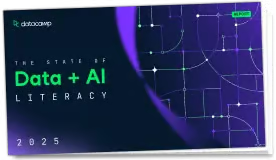
two.ways.stepfor fits a linear regression model applying forward-stepwise strategy.
two.ways.stepfor(y = y, d = d, alfa = 0.05, family = gaussian(), epsilon=0.00001 )glm.control, convergence tolerance in the iterative process to estimate de glm modeltwo.ways.stepfor returns an object of the class lm, where the model uses
y as dependent variable and all the selected variables from d as independent variables.The function summary are used to obtain a summary and analysis of variance table of the results.
The generic accessor functions coefficients, effects,
fitted.values and residuals extract various useful features of the value returned by lm.
d.
The most statistically significant variable (with the lowest p-value) is included in the model and then
it is considered to introduce in the model another variable analysing all the possible models with two variables
(the selected variable in the previous step plus a new variable). Again the most statistically significant variable
(with lowest p-value) is included in the model. The process is repeated till there are no more statistically significant
variables to include. Each time that a variable enters the model, the p-values of the current model vairables is recalculated and non significant variables will be removed.
lm, step, stepback, stepfor, two.ways.stepback
## create design matrix
Time <- rep(c(rep(c(1:3), each = 3)), 4)
Replicates <- rep(c(1:12), each = 3)
Control <- c(rep(1, 9), rep(0, 27))
Treat1 <- c(rep(0, 9), rep(1, 9), rep(0, 18))
Treat2 <- c(rep(0, 18), rep(1, 9), rep(0,9))
Treat3 <- c(rep(0, 27), rep(1, 9))
edesign <- cbind(Time, Replicates, Control, Treat1, Treat2, Treat3)
rownames(edesign) <- paste("Array", c(1:36), sep = "")
dise <- make.design.matrix(edesign)
dis <- as.data.frame(dise$dis)
## expression vector
y <- c(0.082, 0.021, 0.010, 0.113, 0.013, 0.077, 0.068, 0.042, -0.056, -0.232, -0.014, -0.040,
-0.055, 0.150, -0.027, 0.064, -0.108, -0.220, 0.275, -0.130, 0.130, 1.018, 1.005, 0.931,
-1.009, -1.101, -1.014, -0.045, -0.110, -0.128, -0.643, -0.785, -1.077, -1.187, -1.249, -1.463)
s.fit <- two.ways.stepfor(y = y, d = dis)
summary(s.fit)
Run the code above in your browser using DataLab